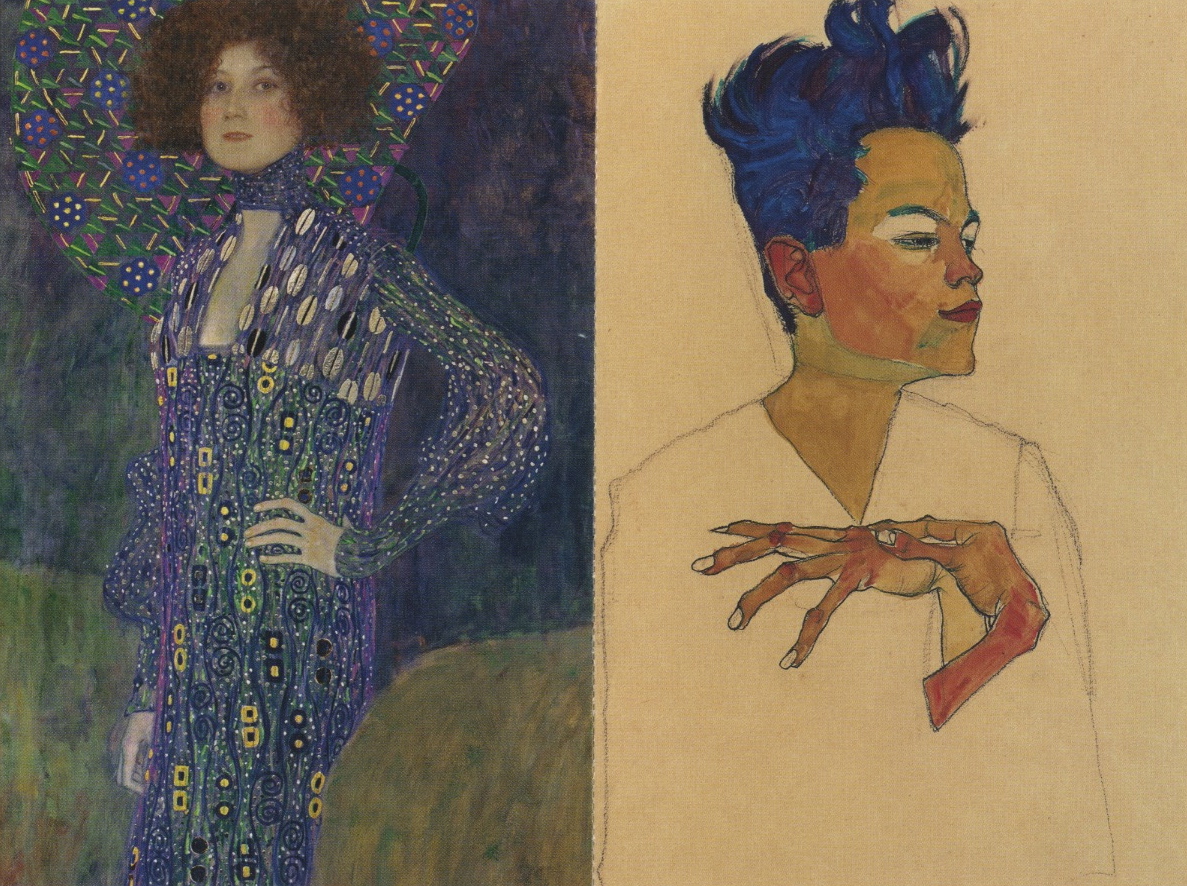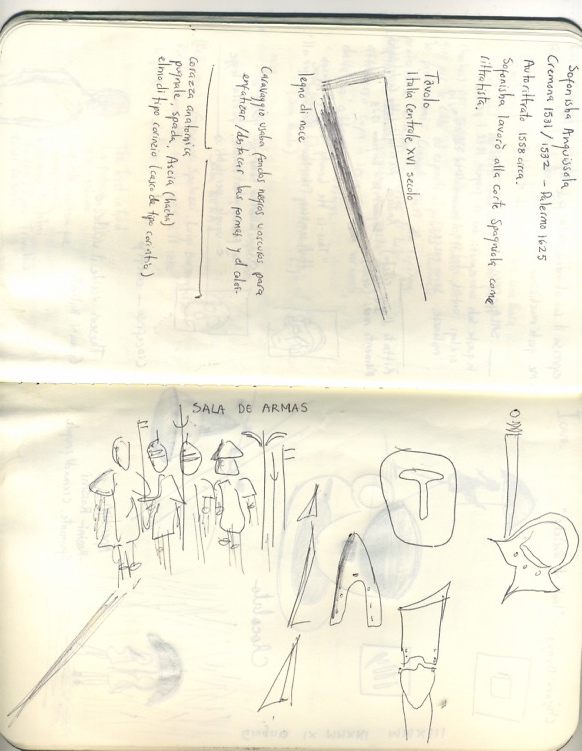Some of these characters have appealed to my curiosity throughout literature; like many film directors whom I first read about in books and saw in fabulous pictures.
I clearly recall the striking personality and beauty of Ingrid Bergman on the black and white pages of a book my father gave me while I was still very young. Also other cinema illustrated books at our studio. These were- though not exclusively- some of my first approaches to good cinema. Many of the art house or cult films I had already read about were tricky to obtain, still the time those images moved should come! and the masterpieces not only expanded my world but definitely changed it.
Art in general has represented a formidable space in which to inhabit, a space where many interesting disciplines coexist, and in a way a sort of perfect civilization for the senses.
These pages are an attempt to collect memories from experiences, exhibitions, books and other media where the names of my life's Encyclopedia proudly appear ...
*The order of the entries is not chronologically organised so the most recent ones will be at the bottom of the page.
I.
Australian Centre for the Moving Image, Federation Square, Melbourne - ACMI Homepage
"Fire Woman is an image in the mind's eye of a dying man who is waiting for his lover to return..."
Bill Viola
When I watched the interview where Bill Viola says these words I felt a sense of reassurance and respect for love, for the way it transforms us and its inherent beauty.
This admirable artist's short interview made me want to know more about his work and his life, which I think are always and inevitably intertwined.
I found to my surprise that not only is he an astonishing artist but also someone who has found a desirable equilibrium in his personal life; in the basic, yet hard to achieve act of self-reflection through other's eyes; in this case, Kira Perov's eyes who appart from being Viola's wife is his Executive Director and an exceptional artist herself (so, please do not misunderstand my words I am not neglecting her) quite the opposite, seeing their website is a marvelous experience for those of us who believe love is the most sublime form of art; and like art, it requires an enormous capacity for self-growth, determination, and humbleness.
I consider finding them both a most lucky event!
http://www.billviola.com/biograph.htm
MODERNITY IN GERMAN ART. THE MAD SQUARE EXHIBITION AT THE NGV
MODERNITY IN GERMAN ART. THE MAD SQUARE EXHIBITION AT THE NGV
MAKING MUSIC
The following images correspond to an exhibition at Forty Five Downstairs Gallery, Melbourne, whose works were paper creations and as part of this collective output, artist Adam Simons showed a small audience his work. We had the opportunity to use the metal music boxes to create our own compositions.
In the above photo artist Adam Simmons showing us the process
Brother drew "Le Corbusier's Modulor" and it sounded surprisingly in tune!.
William Kentridge
This exhibition has been an absolute highlight to gallery wanderings.
The political and ideological depth of his work were remarkable, particularly since his choice of media (black charcoal to a great extent) adds to the dramatic expressiveness of the images which I very much enjoyed. In spite of the serious nature of a large part of the content, Kentridge's work, in my opinion, never loses a spark of playful and lighthearted humour.

The above images and sketches correspond to a visit to "Pinacoteca de Brera" which houses a remarkable collection from the "Scuola Lombarda"
MUSEO POLDI PEZZOLI. MILAN



*below the story of the Company.
http://www.marionettecolla.org/en/compagnia/viewstoria
CHIAROSCURO

What has the chiaroscuro got to do with a trip to Milan and moreover, why have I chosen it as a point of departure?
William Kentridge
This exhibition has been an absolute highlight to gallery wanderings.
The political and ideological depth of his work were remarkable, particularly since his choice of media (black charcoal to a great extent) adds to the dramatic expressiveness of the images which I very much enjoyed. In spite of the serious nature of a large part of the content, Kentridge's work, in my opinion, never loses a spark of playful and lighthearted humour.
MILANO 2013
A trip to Italy and Zürich this last June has sparked a series of inspiring experiences, observations and thoughts that in a sense could have only taken place in such latitudes where cities themselves are open museums and witnesses of time, where art -ancient and contemporary-can be sensed in all its splendor.

The above images and sketches correspond to a visit to "Pinacoteca de Brera" which houses a remarkable collection from the "Scuola Lombarda"
MUSEO POLDI PEZZOLI. MILAN
MARIONETTES IN A TEMPEST
06.2013



These images are from a recent day which filled me with joy! My brother and I went to see a play with marionettes or puppets at Teatro Grassi, Milan. The play was "The Tempest" by Shakespeare which I had long ago read and also later discovered Peter Greenaway's cinematic adaptation in "Prospero's Books" (1991), a masterpiece of visual complexity.
One of the most memorable moments in this play, or should I say, the end of it, was when the curtains were raised high to reveal Carlo Colla & Figli's Company, the people behind the scenes, so to speak. They were proudly standing in their high positions from which strings had gracefully moved to their hand's dance.*below the story of the Company.
http://www.marionettecolla.org/en/compagnia/viewstoria
CHIAROSCURO
Introduction:
Writing this blog entry took several drafts, partly because just as it happens with great experiences, there is a period of expectation, another of immersion and finally that of assimilation. So the best analogy I can now think of for a Milano sojourn is a good film. Every good film I have ever watched always leaves me with a sense of curiosity probably greater than the anticipatory one. And sometimes after years, unexpected, scattered images from these films come to mind.
The following recollections from my Milanese and Swiss trips (though the latter deserves a chapter of its own) are an attempt to reach out for these formidable moments so that they may freeze and remain in the "dark room", develop at their own pace, and surprise me time and again.

Caravaggio (Michelangelo Merisi) Cena in Emmaus
*I have chosen the above image not only because it is a painting by Caravaggio which illustrates the chiaroscuro but because it is part of the collection of the "Pinacoteca di Brera" which houses a vast collection of paintings from the scuola Lombarda and is one of the most gratifying visits I paid in Milan.
This second choice is a bit more capricious. While reading about the topic I came across the enigmatic image and recalled an interesting article I had read a while back (in the link bellow) It is a painting by Leonardo Da Vinci
Dama con l'ermelino (1488-1490)
CHIAROSCURO
Chiaroscuro is Italian for light and dark. From chiaro clear, light + oscuro obscure, dark; or in my native Spanish Claroscuro; a compound noun which becomes self explanatory.
This painting technique which was later to be applied in fields such as wood cutting, photography and cinema dates back to the Reinsassance and became popular during the XVIth century in Baroque and Mannerism. The use of lighting effects in the composition conferred the paintings with volume and dramatic expression; some good examples can be seen in Baroque depictions where the only source of lighting was constricted and unseen. Caravaggio is one of the best exponents of this technique along with Rembrandt and Leonardo Da Vinci.
After living for nearly four years in Australia, where space is hardly scarce and the horizon stretches infinitely -I could make use here of another cinematic analogy and say: where planes are general and open-; where things seem fairly new and urban space still has a bar code regardless of how lived-in it has been or attempts to be; made a distinct impression as soon as I set foot in Milan, Italy.
Going back to Europe after some years, appeared as a vivid visual experience; an encounter with university days in which idealism was praised and sighs often caused by names such as Godard, Truffaut, Antonioni, Fellini…to mention a few.
Europe was the epitome of elegance and culture, of art and design, of book printing and great Architecture, the continent where some creative, carefree souls took the streets of Paris with a camera in hand to start the Nouvelle Vague and I don't think they even imagined its repercussions.
Europe was the birthplace of all those daring avant-garde talents and intellects in the guise of Sophie Taeuber, Tamara de Lempicka, Marguerite Yourcenar. And it was Europe that not only survived two world wars but turned them into art to add to their already existing legacy.
Like with every ancient thing or wise person, Europe is a confrontation with the limits of our knowledge and that's what makes this maze so exciting.
Europe came to my perception as a less wide-open angle and instead, one that makes things and people seem within reach, where textures are almost palpable and the interplay between light and dark, or chiaroscuro, was a constant in my strolls. The narrow streets of medieval walls that block the sun and then disclose it at the end are part of this living narrative where there is a stark contrast between shadow and light, reminiscing its rich history and battle periods being challenged by movements such as Modernism and Futurism or even the rebirth of its Cinema Industry with geniuses like Antonioni and Fellini. Not that it ever died for it was in times of peril that the Italian Neorealism took shape and told the story of a "Roma, Città Aperta"
There is always something about to be revealed in the Milanese landscape: whether ancient, modern or contemporary and the city is but a living theatre; characters that could have well been in a Federico Fellini's shot: marble and limestone props scattered around the citty showing their battered limbs while pigeons stoop down above them, magnificent churches with all- witnessing gargoyles, medieval castles, intriguingly seductive architecture placed here and there by Gio Ponti, bicycles and vespas that honour their name buzzing as they pass by.
There is movement all around this open stage, fancy old men and women wearing colour with pride, youngsters chatting up, people sitting in the outdoor cafes and piazzas, daring mothers on bicycles with one or more children in their respective little chairs; them, pedalling with high heels and charm. And Time, the oldest of spectators claps while we all bow to him.
*About my choice of Leonardo's painting





















